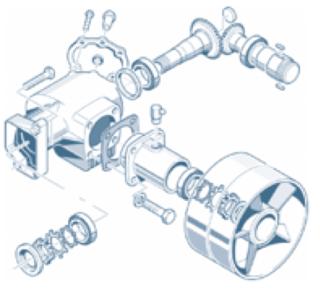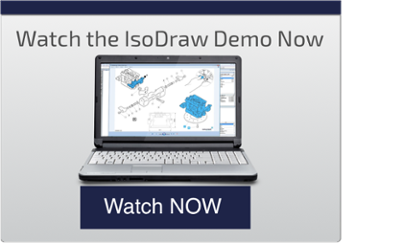 First things first: What is a technical illustration? And where does it lie in the overall manufacturing process?
First things first: What is a technical illustration? And where does it lie in the overall manufacturing process?
A technical illustration is a product graphic which is used in a variety of documents throughout the manufacturing process. It provides a more simplified view, and used in things like part lists and instructional diagrams.
While engineering drawings are essential for manufacturing functions to operate effortlessly, they can be complicated for the end user to understand. Often, they provide too much detail which makes it harder for end users to interpret the information they need to know.
However, creating technical illustrations isn't without it's difficulties.
Typically the pain points in the process today lies in the way that teams are structured and information is shared from the engineering design team to the technical publications team. This includes:
- Static periods of productivity: Teams may have to wait until the product design is finished before it is sent across to the technical publications team (or even the marketing team) for them to begin the process of putting the document together
- Delayed schedules: Since one team is waiting for the other to finished their tasks in order to move onto the next, this will slow down the entire production cycle
Understandably, this can cause real problems and significant delays for the entire manufacturing process. But by optimising your technical illustrations process, you can ease this problem and make sure you take advantage of the benefits. Here are three ways that you can start:
1. Quickly and clearly convey information
Technical illustration drawings enable you to quickly and clearly display a variety of information about a manufactured product at your fingertips. Not only does this show how the product is used, it also shows how it was assembled and serviced too, providing quick answers to urgent questions.
Having a way to share information from your engineering design team to your technical publications team concurrently means that you can get to work straightaway, without having to wait for the product design to be finished. Plus any late stage design changes are quickly communicated.
2. Show meaningful data to the end user
Giving clear instructions relies on efficiency, and illustration drawings need to be kept simplistic in order to assist this style of working. So details are kept to a minimum and only meaningful data is shown, therefore no distractions are omitted.
3. Emphasise key details
Although design teams want to access details efficiently, they need to access the right data effectively. Illustration drawings make use of perspective and isometric views, as well as graphical devices (such as weight, hidden lines removed and cutaways). This helps to stress the most important details of the illustration, which the design team needs to focus on.
To find out more about how technical illustrations work in practice, watch our demonstration now
